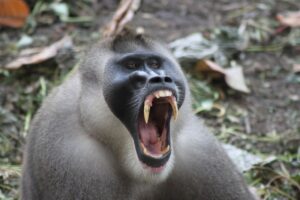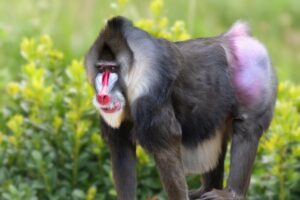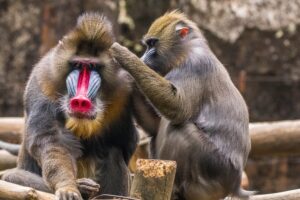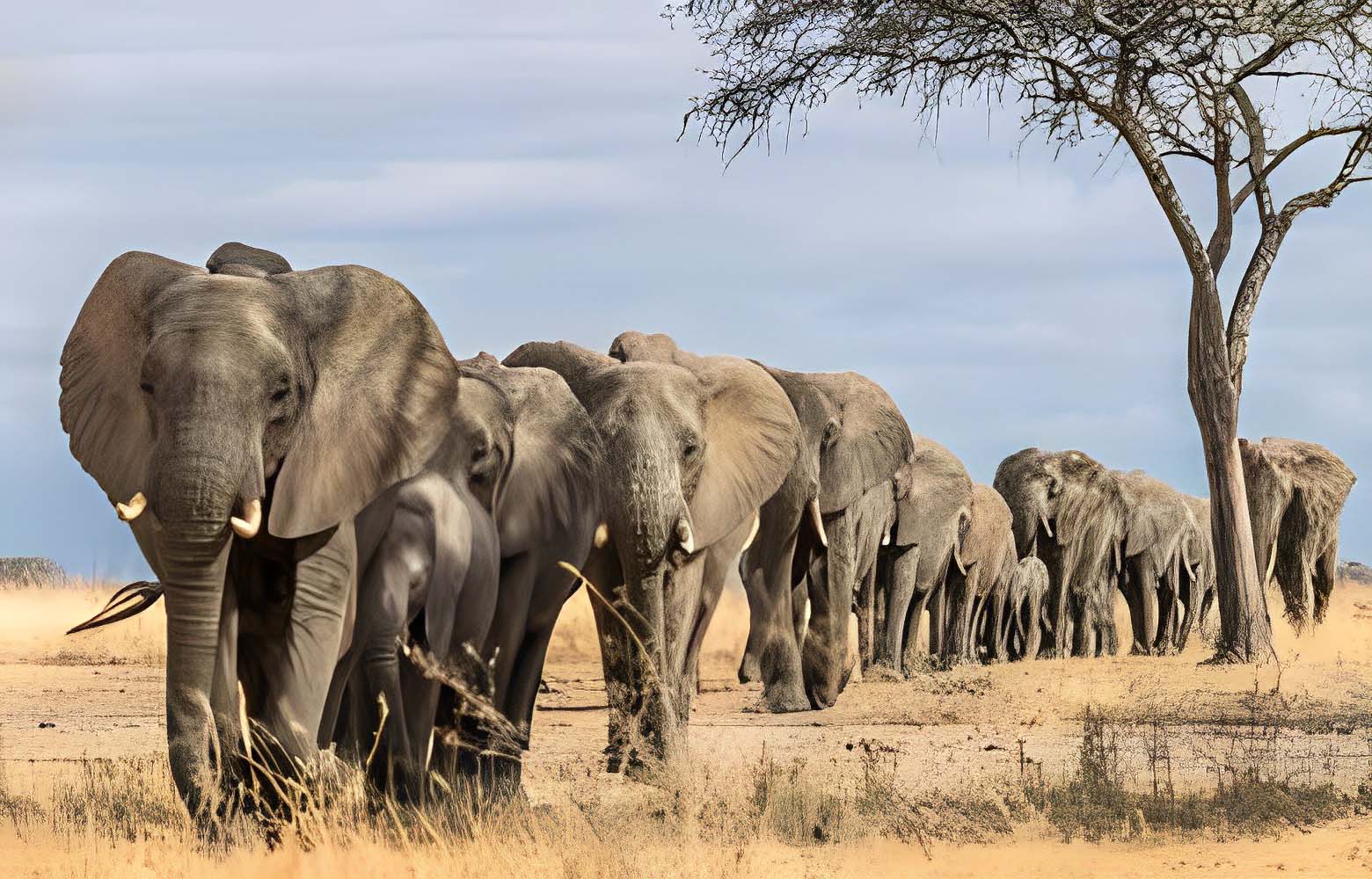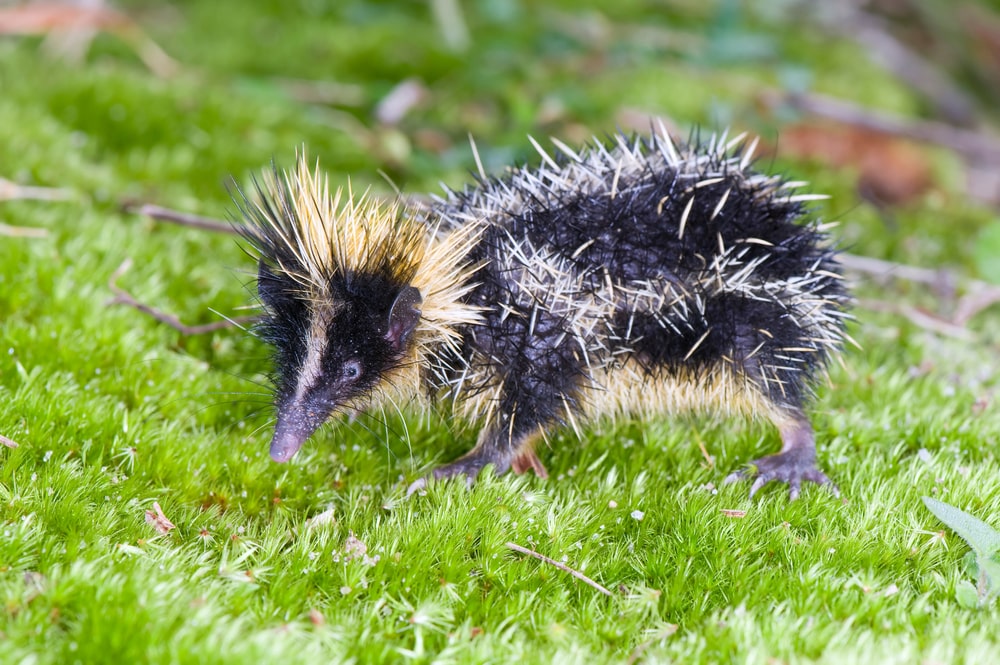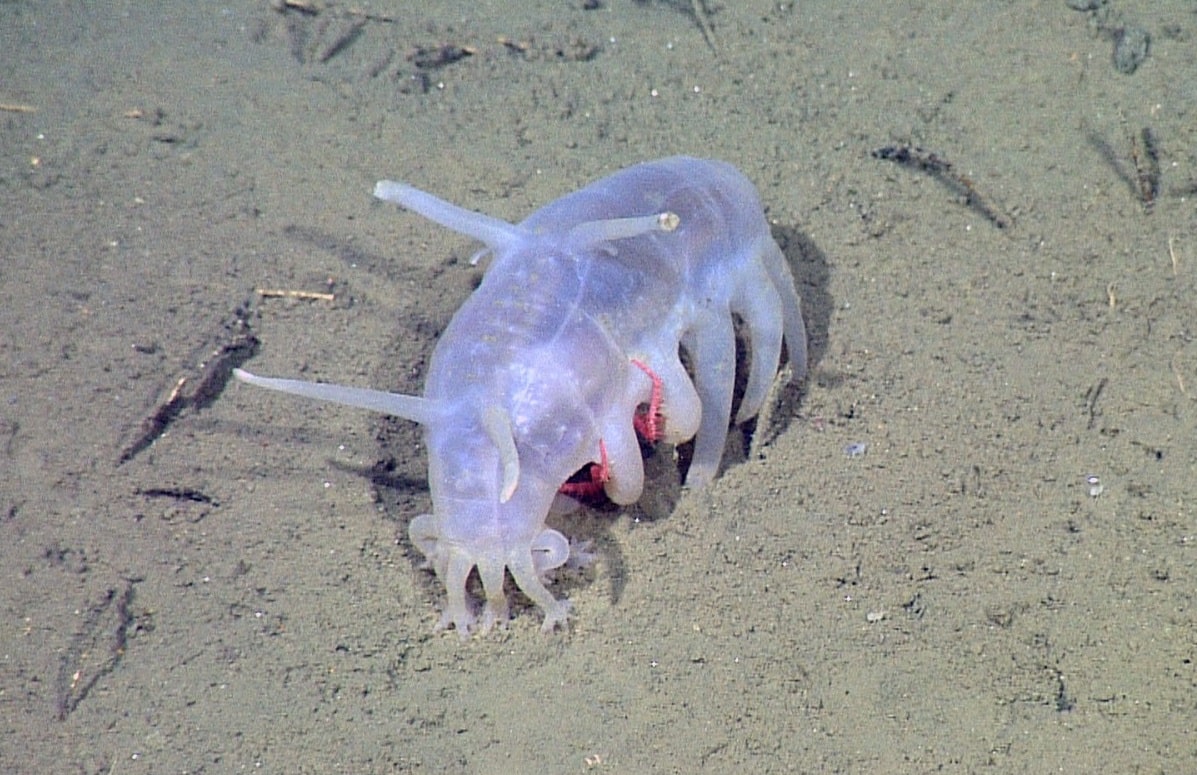Mandrill vs Drill Monkey, Size, Appearance, Range & Habitat
Mandrils and Drill monkey both are primates. They have got different characteristics and features which make them differ in their personalities and behaviour. Its time to discuss the difference between Mandrils and Drills.
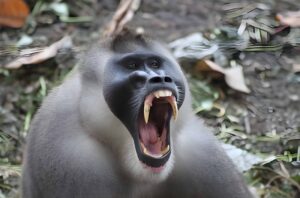
Mandrill & Drills Appearance
Drills range in length from 24 to 30 inches (61 to 76 cm), with the tail adding another 2 to 3 inches (5.2 to 7.6 cm). Males are about twice as large as females, weighing an average of 55 pounds (25 kg). Drills have noticeable ridges on the sides of their nasal bones, which are formed by ridged and grooved bone growth. The absence of brilliantly colored facial skin and large grooves in the facial ridges separate male drills from male mandrills.
Drills’ faces are jet black, with the exception of a brilliant red lower lip. Beards, crests, and manes distinguish this genus. Drill pelage is brown with a yellow tinge. Because of the increased density of blood vessels in this area, the skin on the rump of these animals is brilliant red. Females and juveniles have a more subtle rump coloring. The mandrill is the world’s largest monkey species. Because of the male’s vibrant coloring, they can be recognized easily.
The sexual dimorphism in these primates is the most significant of any primate. Males range in length from 30 to 37 inches (75 to 95 cm). The tail adds 2 to 4 inches (5 to 10 cm) to the overall length. Males weigh between 42 and 82 pounds (19 and 37 kg). Males have big canines that can reach 1.8 inches (4.5 cm) in length. The mandrill has olive green, black, or grey fur. White fur covers the belly. They feature a red and blue nose, as well as yellow fur around the chin. The rump is colored red, pink, and blue.
Range and Habitat of Drills
Drills are only found in a small area in eastern Africa. Their range stretches from the southeast side of Nigeria to the northwest region of Cameroon. Because of their limited numbers, this species is difficult to discover and research throughout its range. This creature lives in a range of wooded environments. It is mostly found in mature, undisturbed jungle. Much of their habitat is near the coast or along the banks of rivers and streams.
This species is rarely seen outside of deep forest cover. Mandrills are found predominantly in Western African woodlands, frequently near rivers, wetlands, or savannahs. The main range of the animal includes the countries of Congo, Gabon, Cameroon, and Equatorial Guinea. Despite being predominantly evolved for a terrestrial lifestyle, this species gathers in the trees at night for safety and comfort. Within their range, they have a habit of switching between different trees every night.
Food Habits of Mandrill Monkeys
Drills are primarily herbivorous primates with a diet that consists mainly of plant material. Fruits make up a significant portion of a drill’s diet. They are known to consume a wide variety of fruits found in their rainforest habitats. Fruits provide essential nutrients, including sugars and vitamins, and drills play a crucial role in dispersing seeds throughout the forest when they eat fruits and then move to different areas. Drills also feed on leaves, including young leaves and shoots.
Drills have strong jaws and teeth that allow them to crack open hard-shelled seeds and nuts. This ability to access seeds and nuts contributes to their dietary diversity. Although primarily herbivorous, drills are also known to occasionally eat insects and small invertebrates. Mandrills are master foragers that chase the two plants and little creatures like organisms, roots, seeds, natural product, bugs, worms, creatures of land and water, reptiles, snakes, snails, eggs, and little warm blooded animals.
Their diet is really productive and may incorporate upwards of 100 unique species. The mandrill genders seek after various hunting systems. Grown-up guys will more often than not scavenge on the ground, while females and youngsters will more often than not search in the trees. By assisting in the spread of seeds throughout the local forest, the mandrills play an important ecological role.
Mandril vs Drill Behaviour
Drills are sociable and diurnal mammals. They often form tiny groups of twenty individuals or less. These troops are made up of a dominant male and several related females with their offspring. Drills occasionally occur in significant concentrations or super-groups of more than 100 animals during times of plenty food. They are semi-terrestrial creatures that sleep in the tree’s lower canopy. They use all four limbs when travelling around the ground.
Drills are extremely territorial creatures. These primates brush their chests on trees to identify their territory. Drills rely mostly on vocalization to maintain touch between group members in dense forest habitat. Two grunting calls are the most regularly used vocalizations. Mandrills are very social animals, establishing mixed groups of up to 40 individuals that eventually form vast force of over 600 animals. Individuals in these communities follow a clear social hierarchy.
Each group is led by a huge and colorful dominant male who mates with receptive females and fathers nearly all of the group’s offspring. A single troop can occupy up to 50 sq km. Because mandrills are territorial creatures, each troop’s home region is scent-marked and aggressively protected against intruders. Members in a group usually communicate with one another by making a loud noise with deep grunts.
Mandrills are diurnal animals that spend the majority of their day searching for food and sleeping in trees at night. Now let’s see, who would win a fight, between a drill and a mandrill?! In the lush rainforests of Africa, two extraordinary primates, the drill and the mandrill, reign supreme with their distinctive appearances and behaviors. In the realm of primate warfare, size can play a significant role. This size advantage is a formidable asset for mandrills in any hypothetical battle scenario.
World’s Largest Monkeys
Both monkeys possess strong jaws and teeth that allow them to crack open hard-shelled seeds and nuts. However, mandrills, with their larger bodies and well-developed musculature, likely have the upper hand when it comes to sheer physical strength. Mandrills can use this strength defensively and offensively. Drills, despite their relatively smaller size, have sharp teeth and strong jaws. These canines can inflict serious bites if the drill feels threatened or cornered.
In terms of defense, drills possess agility and the ability to climb trees quickly. Their arboreal skills allow them to evade predators and potentially escape from a dangerous situation. Drills might rely on their agility as a defensive tactic. Mandrills also have defensive measures at their disposal. Their vividly colored facial markings serve as a visual signal to other mandrills within their troop.
In the imaginary clash between a drill and a mandrill, the odds may favor the mandrill due to its larger size and physical strength. Mandrills could use their imposing presence and sharp canines to intimidate or even overpower a drill. However, the outcome would still depend on various factors, including the specific circumstances of the encounter, the motivation behind the conflict, and the determination of the individuals involved.
